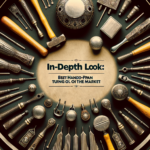The handpan, often referred to as a hang drum, is a relatively new instrument in the world of music. Its ethereal and hypnotic soundscapes have captured the hearts of music enthusiasts and casual listeners alike. Originating in Switzerland in the early 2000s, the handpan has surged in popularity across the globe, transcending cultural and linguistic barriers. This article delves into the international appeal of the handpan, exploring its origins, the uniqueness of its sound, and its impact on global music culture.
Origins and Evolution
The handpan was invented by Felix Rohner and Sabina Schärer of PANArt in Bern, Switzerland. Introduced in 2001, the instrument drew inspiration from multiple percussion instruments, including the steelpan, Indonesian gamelan, and African ghatam. The original handpans were called “Hang”, deriving from the Bernese German word for “hand”. Its creators designed the Hang with the intention of combining the resonance and tonality of various ethnic instruments into a single, hand-played form.
With the launch of the Hang, Felix and Sabina opened the door to a new world of percussive and melodic potential. By meticulously crafting each instrument by hand and achieving harmonious overtones, PANArt set a new standard. The demand for these instruments quickly outpaced their ability to produce them, leading to a long waiting list and further fueling the mystique surrounding the handpan.
Sound and Technique
The handpan is unique for its convex, UFO-like shape and its tonal purity. Crafted from two hemispherical shells of nitrided steel, the instrument features a central note, or “ding”, surrounded by a circle of tone fields. Each tone field can produce multiple pitches depending on how it’s struck, offering rich harmonic possibilities.
Musicians play the handpan with their hands and fingers, creating a continuous flow of sounds. The lack of drumsticks and mallets leads to an intimate, tactile connection between player and instrument. The variations in touch and pressure produce different dynamics, enabling performers to execute a wide range of expressions — from gentle whispers to boisterous crescendos.
Crossing Cultural Boundaries
One of the most captivating aspects of the handpan is its ability to bridge cultures. Its sound resonates with people from various backgrounds, often evoking emotions and memories with each note. Street performers, YouTube artists, and professional musicians alike utilize the handpan to create cross-genre compositions, which include elements of classical music, jazz, flamenco, and even electronic music.
The handpan’s appeal is enhanced by its portability and simplicity. Unlike larger, more conventional instruments, the handpan can be transported easily, making impromptu performances possible. Thus, the instrument has become a favorite among buskers and street musicians, who often attract large crowds with their enchanting melodies.
The Rise of Global Handpan Artistry
Social media platforms like YouTube, Instagram, and Facebook have played an instrumental role in popularizing the handpan across the world. Musicians such as Daniel Waples, Sam Maher, and Kabeção have amassed substantial followings by sharing their handpan performances online. These artists have not only demonstrated the instrument’s versatility but have also inspired a new generation of handpan players.
Workshops and festivals dedicated to the handpan have sprouted internationally, fostering communities that celebrate the instrument. Events like the HangOut UK, PanOz, and the Pantasia Festival attract performers and enthusiasts, offering a space for collaboration, learning, and cultural exchange.
Healing and Therapeutic Qualities
Beyond its musical applications, the handpan is also recognized for its therapeutic benefits. Many practitioners of sound therapy and holistic healing integrate handpan music into their sessions. The instrument’s soothing tones help in reducing stress, enhancing meditation, and creating a sense of peace and well-being.
In hospitals and wellness centers, handpan music has been used to aid in relaxation and pain management. Studies have shown that music therapy can significantly improve patients’ quality of life, making the handpan a valuable tool in both medical and holistic settings.
Challenges and Future Prospects
Despite its growing popularity, the handpan community faces several challenges. The high demand and the intricate craftsmanship required for each instrument result in long waiting times and high prices. Quality handpans often cost several thousand dollars, putting them out of reach for many aspiring musicians.
However, the future looks promising as more makers enter the scene, experimenting with new materials and tuning methods. Technological advancements and innovative manufacturing processes are gradually making the handpan more accessible. Virtual workshops and online tutorials also contribute to a wider dissemination of playing techniques and maintenance skills.
Conclusion
The handpan, with its celestial sound and universal appeal, continues to grow as a global musical phenomenon. Its ability to connect people across different cultures and backgrounds is a testament to the transcendent power of music. As the handpan community expands and evolves, it not only enriches the global soundscape but also inspires a deeper appreciation for the harmonies that unite us all.
Frequently Asked Questions
1. What is a handpan?
A handpan is a type of percussion instrument known for its unique, resonant sound. It is hand-played and features a central note and multiple tone fields that produce various pitches and harmonics.
2. How is a handpan different from a steelpan?
While both instruments are made from steel, the handpan is convex and played with hands, producing a softer, more melodic sound. In contrast, the steelpan is concave, played with mallets, and has a sharper timbre.
3. Can beginners learn to play the handpan?
Yes, the handpan is relatively approachable for beginners. Its intuitive layout allows players to start making music with basic rhythmic patterns, though mastering the instrument requires practice and dedication.
4. Why are handpans expensive?
Handpans are expensive due to the intricate craftsmanship involved in their making. Each instrument is typically hand-tuned and constructed from high-quality steel, processes that require significant time and expertise.
5. How can I acquire a handpan?
Handpans can be purchased from specialized handpan makers, at music festivals, or through online platforms. Due to high demand, there may be a waiting list, and it is important to ensure the purchase is made from a reputable source.





